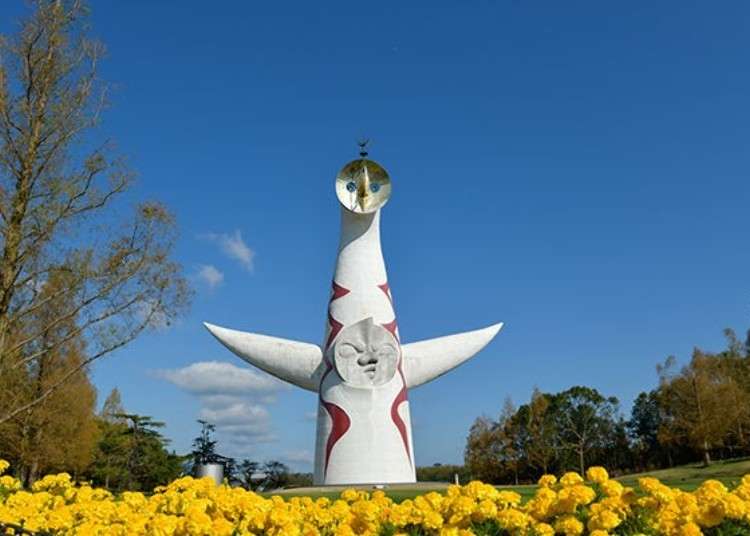
The Tower of the Sun, designed by the late artist Taro Okamoto, was made as part of the theme of the first Japan World Exposition (a.k.a. Osaka Expo) held in 1970. The interior of the tower has been reopened to the public in March 2018, the first time in 48 years.
The Expo ’70 Commemorative Park, where this quirky landmark exists today, is bursting with nature. Let's have a look around this park and see what the Tower of the Sun looks like inside!
- Table of Contents
-
- What is Osaka's Tower of the Sun?
- Reservations Required to Enter the Tower of the Sun
- Access: Getting to the Tower of the Sun
- Overwhelmed by the Intensity of the “Sun of the Underworld”
- A Spiritual World beyond Imagination, The Tree of Life is Out of This World!
- So Many Sun Towers in the Museum Shop!
- Recommended Facilities in the Expo ’70 Commemorative Park
What is Osaka's Tower of the Sun?
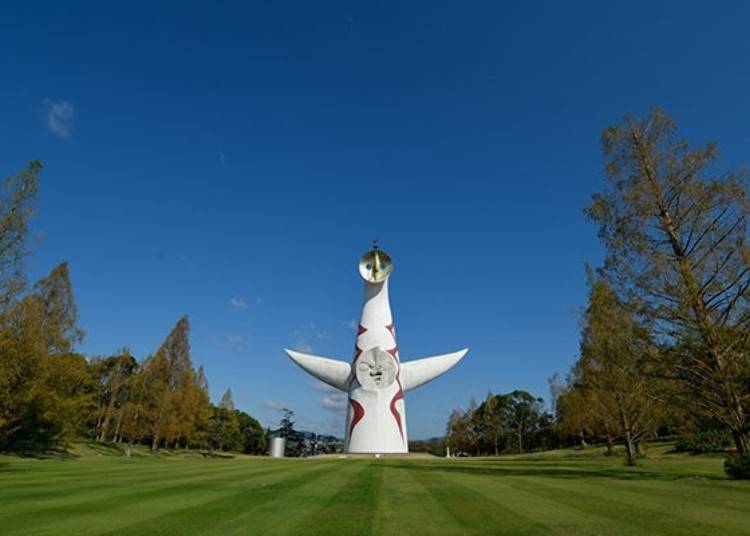
The Tower of the Sun, which represents the Osaka Expo, is about 70m tall; the diameter of the base is about 20m, and each arm is about 25m long. It is the largest piece of work by Taro Okamoto.
It was built as one of the theme buildings for the Osaka Expo and was planned to be demolished after the exposition. Since it was intended as a temporary installation, it was not open to the public for decades.
With the request of revitalizing the legacy of the Osaka Expo increasing in recent years, the Tower of the Sun underwent earthquake resistance and other renovations, and the interior was opened to the public on March 19th, 2018.
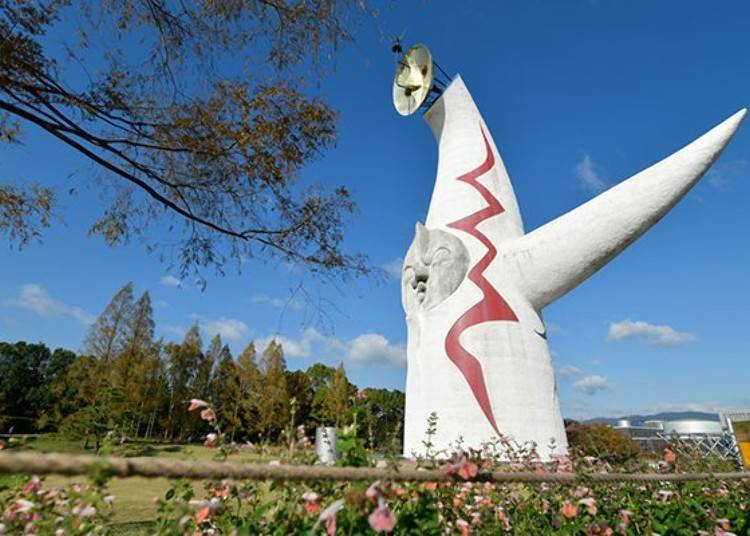
According to what Taro Okamoto said, “The things I make are different from modernism. I went against the cool western modernism and it's opposing Japanese style, and aimed to build a crazy shrine that connects the primitive and contemporary.”
The Tower of the Sun has three faces, two in the front and one in the back. The Face of the Sun in the center represents the present; the Golden Mask at the top, the future; and the Black Sun in the back, the past.
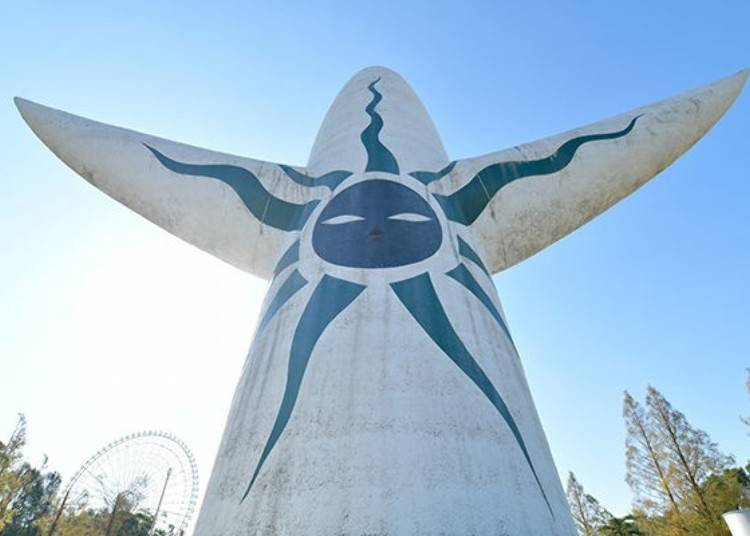

The Osaka Expo had the three themes of “Past, Present and Future,” centered around the Tower of the Sun. Many works were gathered from the world along with Okamoto’s artwork made for the Osaka Expo.
Reservations Required to Enter the Tower of the Sun
To enter the Tower of the Sun, you must make a reservation on the official website. You can make reservations up to 4 months in advance, and reception is on a first-come-first-serve basis.
You can make a reservation for up to six people at a time. With its growing popularity, making a reservation has become difficult. If you figure out your travel dates, we recommend making a reservation as soon as possible.
Entrance fees are 700 yen for high school students and above, 300 yen for elementary and Jr high school students, and free for children below elementary school (prices include tax, additional entrance fee to the Natural and Cultural Gardens is required).
The interior route uses stairs, so we recommend comfortable walking shoes. People in wheelchairs and children under 4 can use the elevator to look around.
Access: Getting to the Tower of the Sun
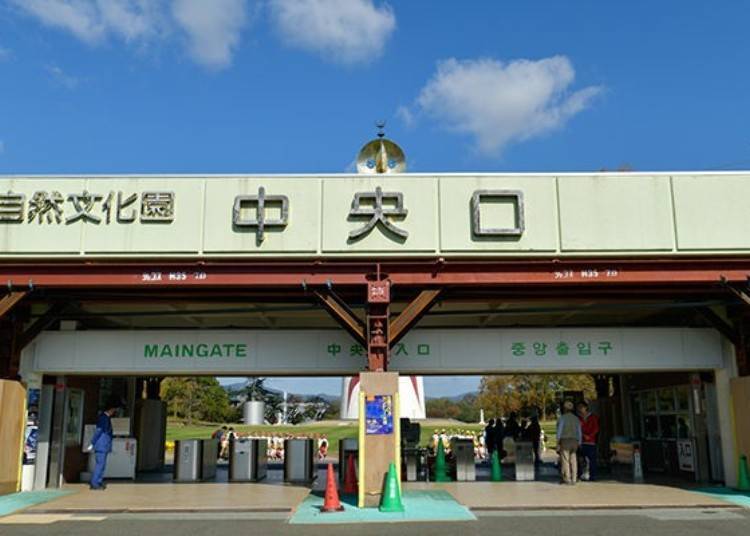
To reach the Tower of the Sun, get off at the Osaka Monorail Bamapaku-kinen-koen Station and walk about 10 minutes to reach the Natural and Cultural Gardens on the south side of the Expo ’70 Commemorative Park.
Once you enter the garden (250 yen for adults; 70 yen for elementary and junior high students; includes admission to Natural and Cultural Gardens and Japanese Garden) the tower will be right in front of you.
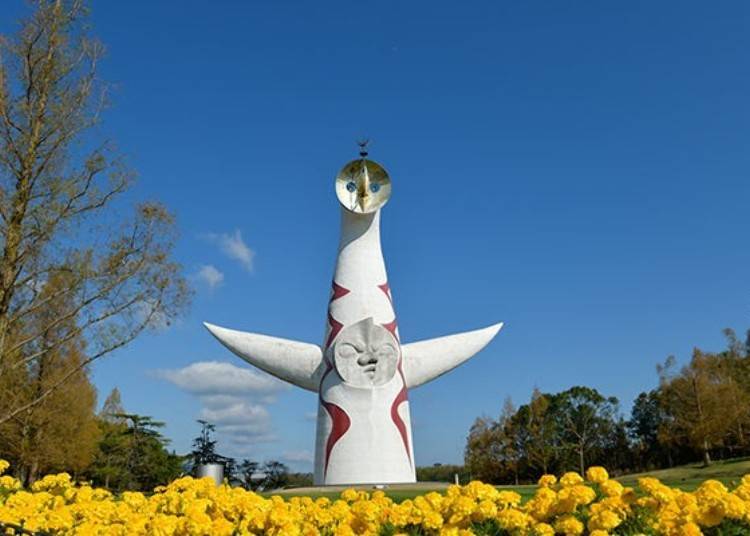
Go around the lawn surrounding the Tower of the Sun and head to the back of the tower. The entrance to the visitor's course is located at the bottom of the slope behind the tower.

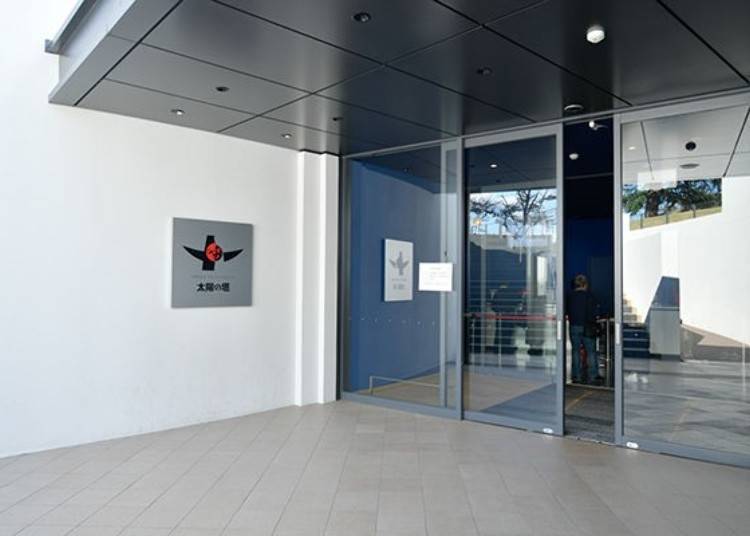
Overwhelmed by the Intensity of the “Sun of the Underworld”
The staff will guide you along and explain the highlights. The tour will start at the time of reservation.
*Photos are prohibited in certain areas. For more information please see the official website.
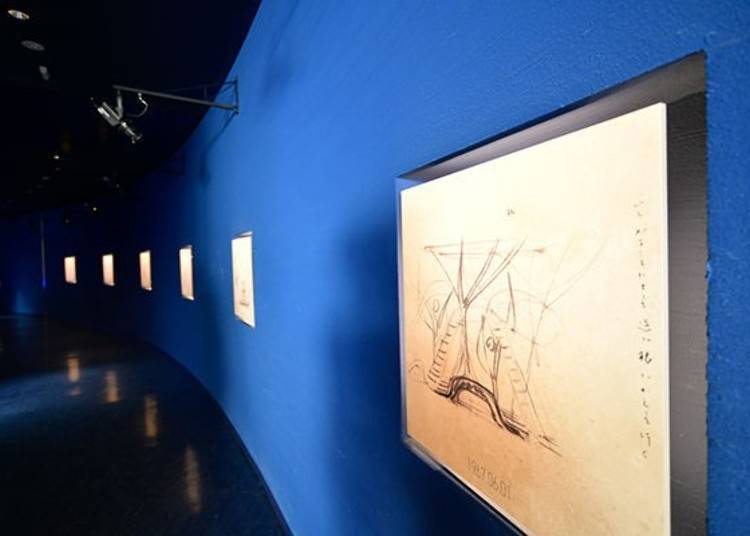
Early summer of 1967, the Osaka Expo Association secretary-general visited Mr. Okamoto at his atelier in Aoyama and asked if he could be the “producer of the theme exhibition.” This was the event that leads up to the creation of the Tower of the Sun.
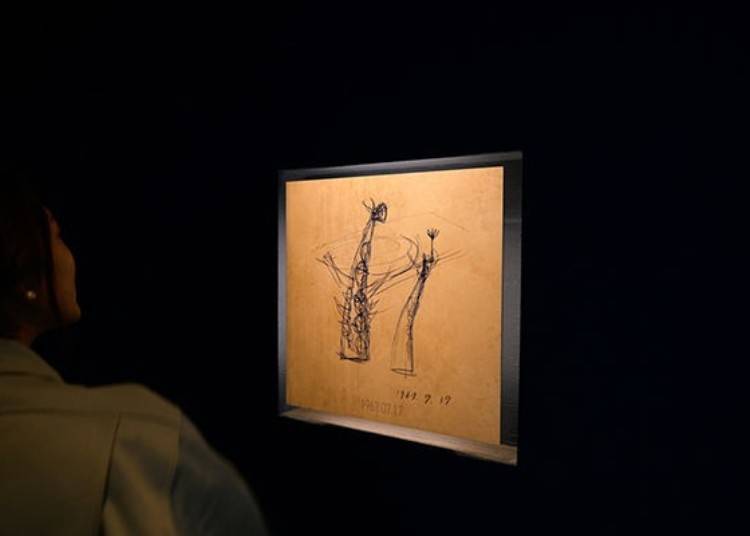
According to the guide, Mr. Okamoto didn’t accept the offer right away, but he was working on designs and drawings before he officially accepted the offer on July 7th, 1967. Some of the designs on display had dates from June 1967. About 3 months later, in September, the design of the Tower of the Sun was finalized.
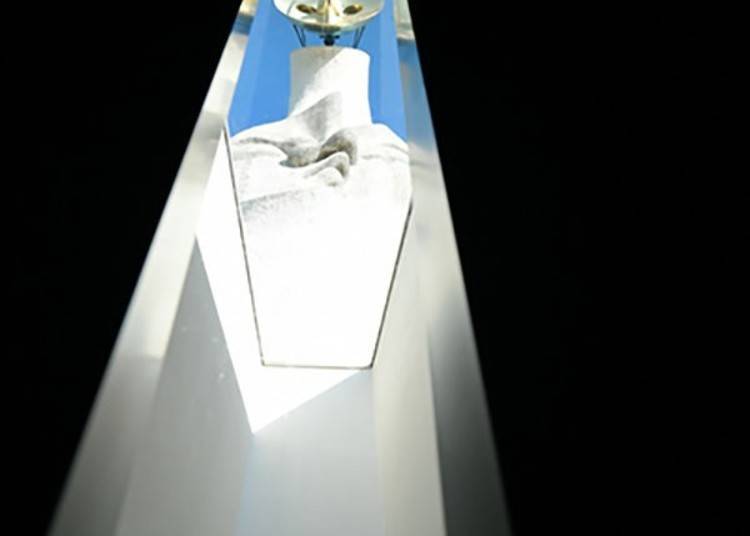
Going down the hallway leads to a wide spacious area. An artwork that represents the corona (the aura of plasma that surrounds the sun) that is approximately 11m wide, and the Sun of the Underworld about 3m in diameter is placed in the center.
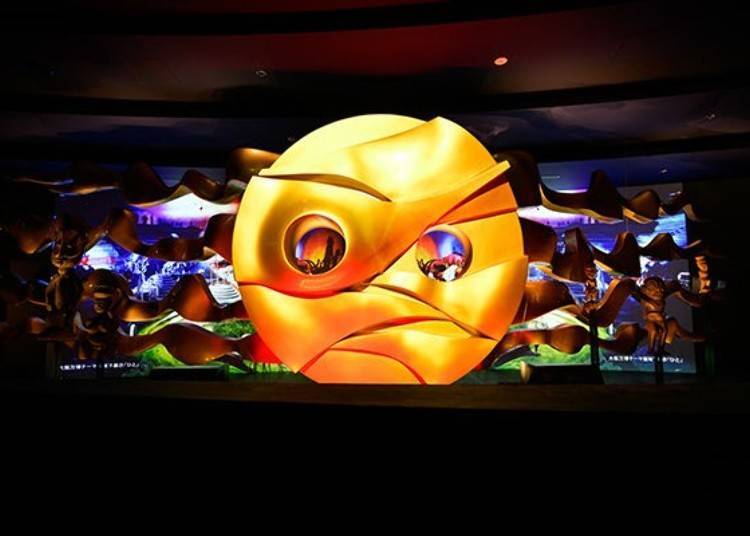

By using projection mapping to show images of the past on the Sun of the Underworld as a screen, it is replicating the world of “prayer,” part of the “Past: The World of Origin,” which Mr. Okamoto expressed during the expo.
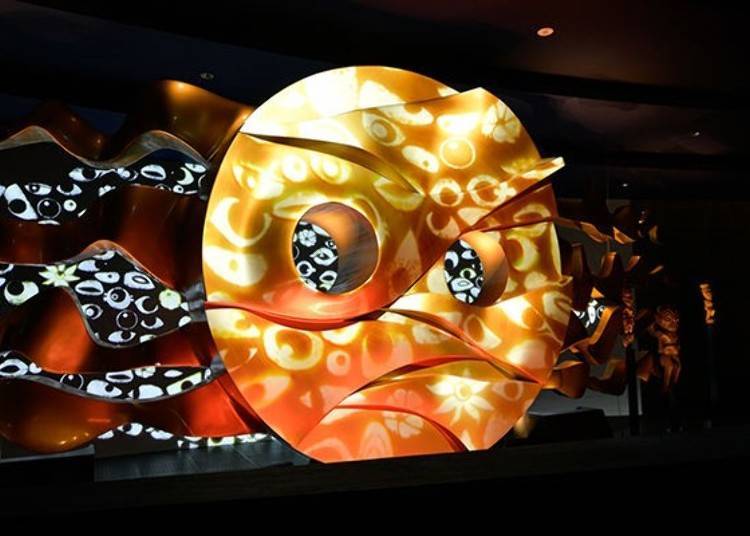
Sun of the Underworld has a strong presence and numerous idols and masks. With the changing images and mystical music, it creates a fantasy world. Mr. Okamoto’s quote of “Art is magic” really matches the setting.
Going further in, there was even a bigger space waiting for us!
A Spiritual World beyond Imagination, The Tree of Life is Out of This World!
An object that grows up and branches off like a tree. This is the Tree of Life, the symbolic work inside the Tower of the Sun.
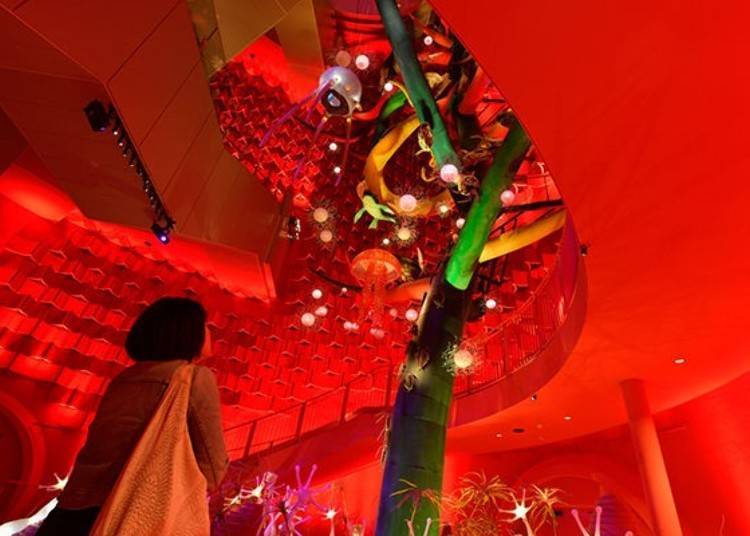
The Tree of Life goes vertically through the tower. Along the tree, there are many objects placed or intertwined on branches. At the time of the Osaka Expo, there were 33 types 292 biological models, but currently, there are only 33 types 183 objects.
Located at the root of the tree are protists like an amoeba. Going up objects such as trilobites, fish, dinosaurs, and humankind are on display. It is expressing the evolution of life.
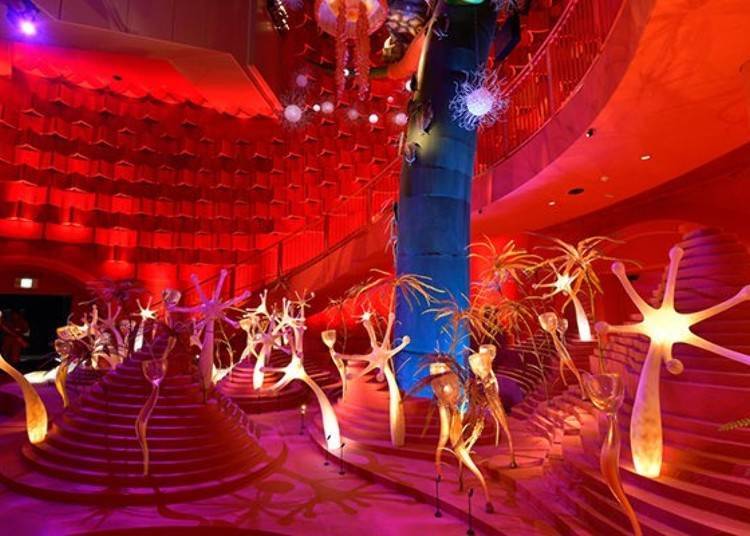
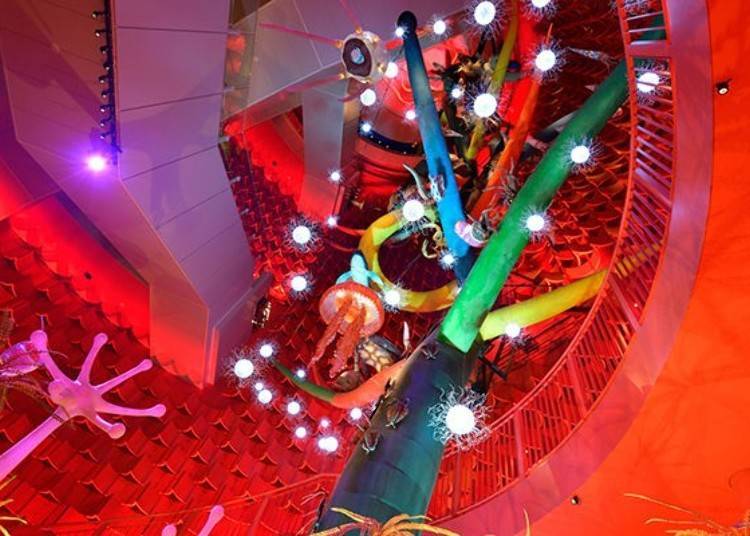

The information plates on the models are the original plates. The extinct trilobites that lived during the Paleozoic era are on top of the plate. Ther are also prehistoric creatures that look like squids. You can find many ancient creatures all over the place, and the colorful and unique looks are breathtaking.
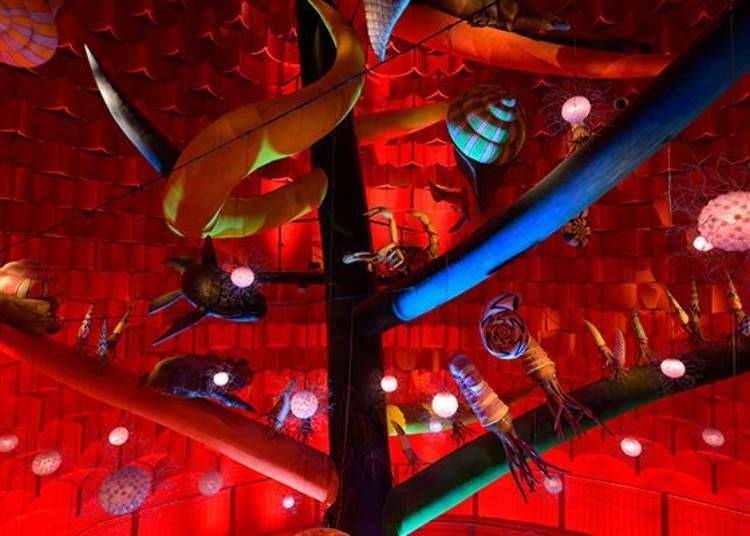
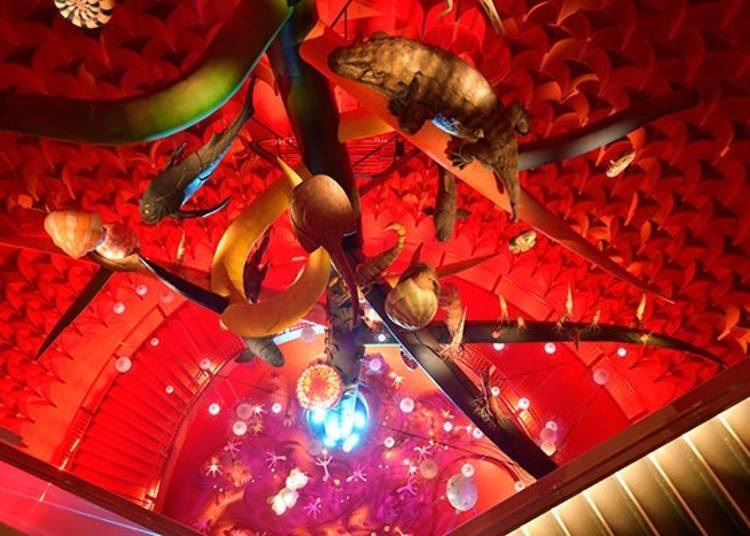
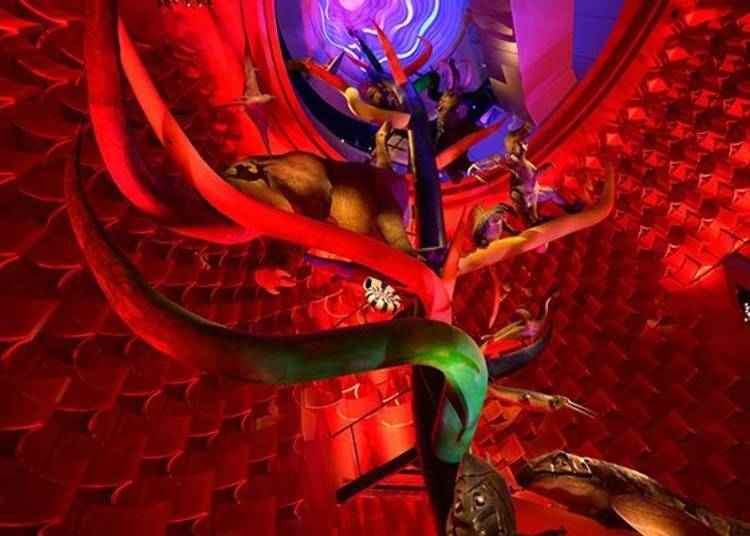
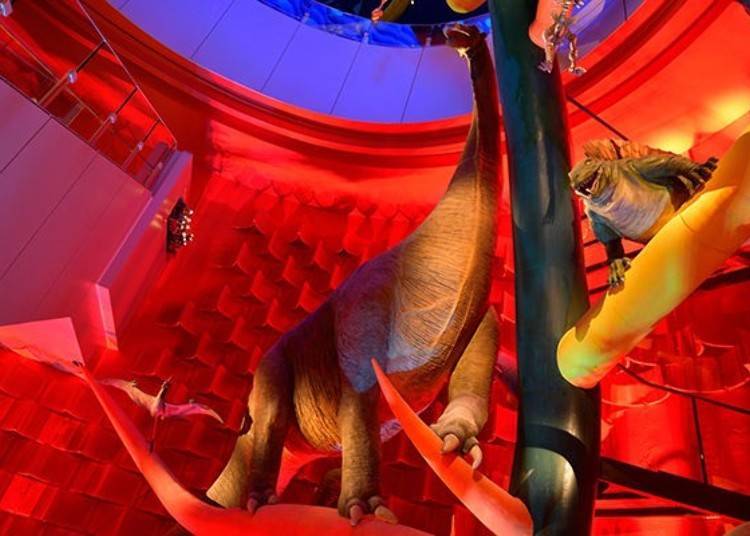
The guide told us that “to prepare for public viewing, the creatures were lowered and repaired, but the brontosaurus has never left the Tree of Life in 48 years.”
Also inside the tower, the same unique music that was played during the Osaka Expo is still played. The music "Seimei no Sanka,” was composed by the late Toshiro Mayuzui. It gives you a feeling that you are in another world.
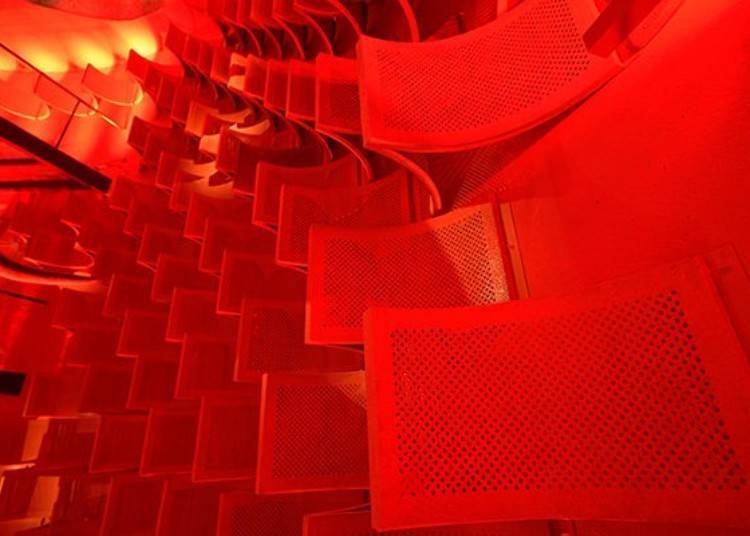
After the era of dinosaurs finish, you can start to see mammoths and gorillas.
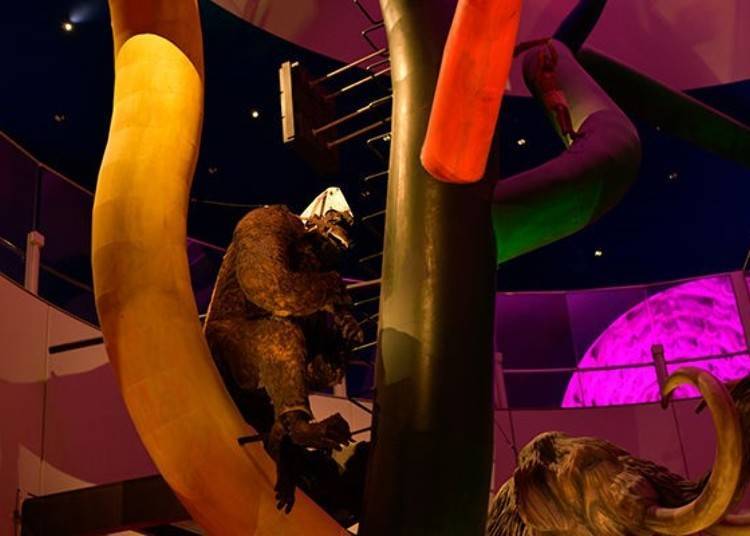
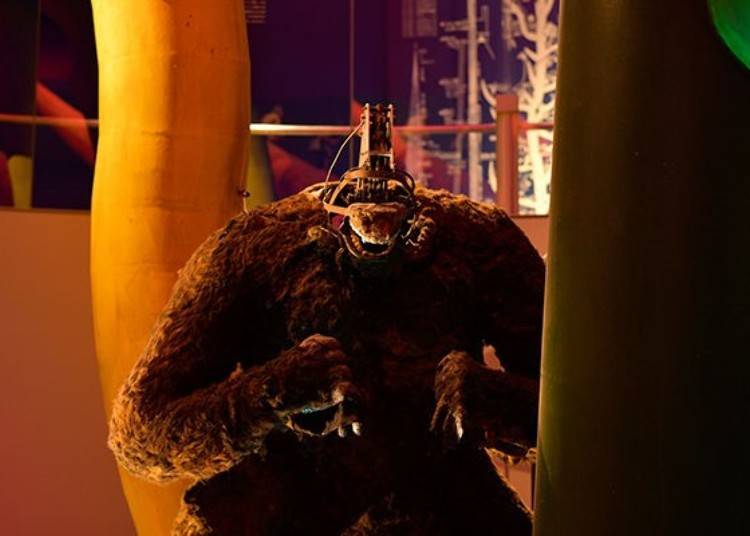
We climbed to the top and couldn’t find humankind, but then we finally saw it! The guide explained that “These are not homo sapiens like you or me."
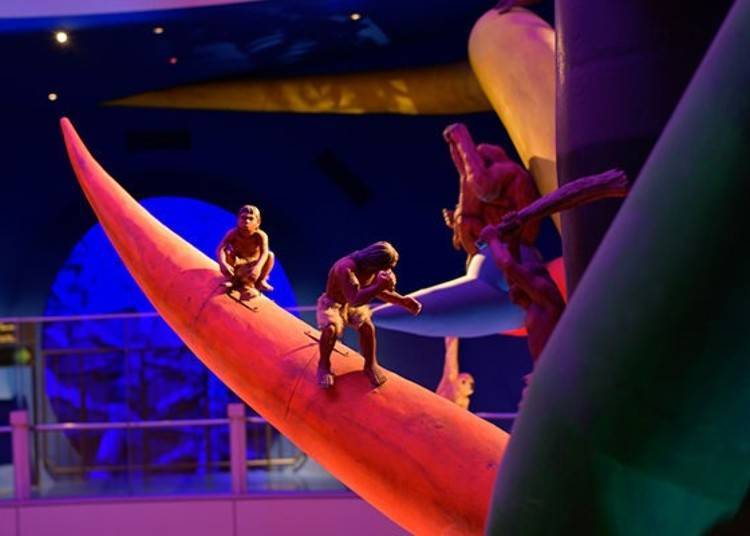
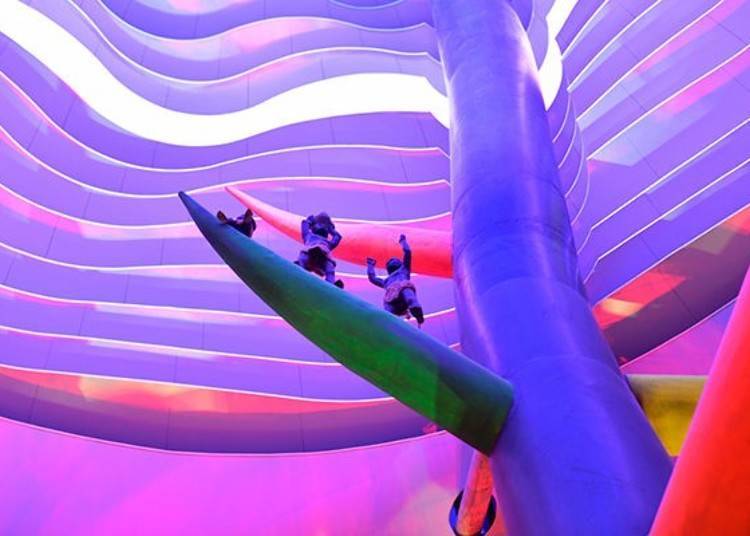
The Neanderthal and Cro-Magnon were carefully made including their skin texture. The guide also told us, “Mr. Okamoto said that ‘mankind has not evolved at all’ compared to the people who created various tools to live in the harsh world and painted animals in the Lascaux Cave. That is why he didn’t include homo sapiens.”

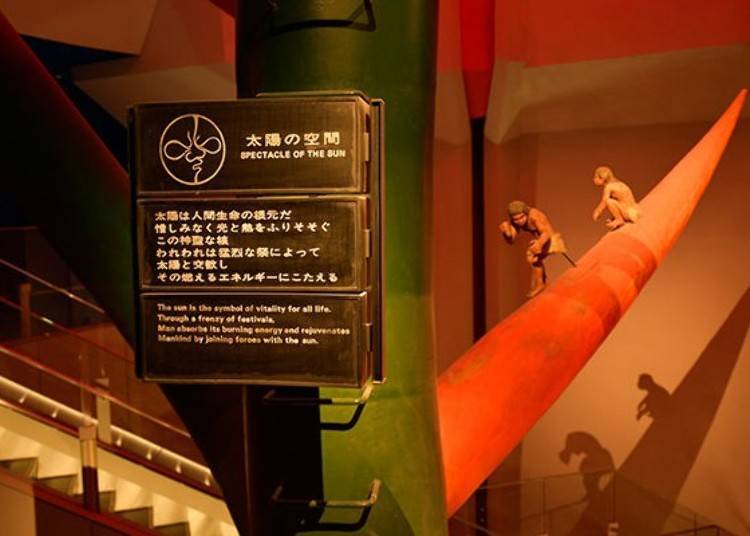
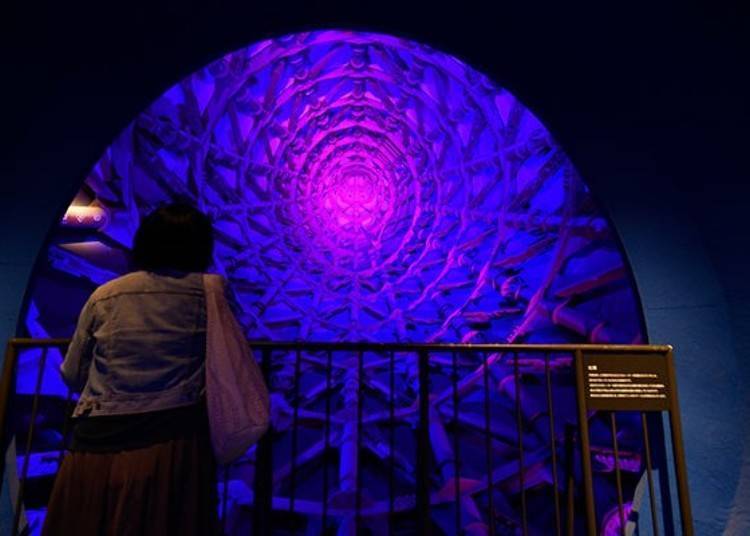
The 30 minute guided tour ends here. We went down by the stairs in the back area. The panels along the way explain the Tower of the Sun in greater detail.
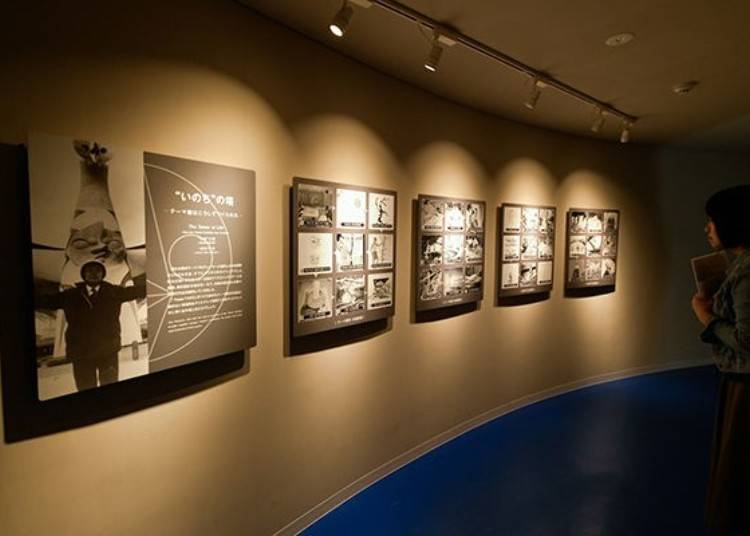
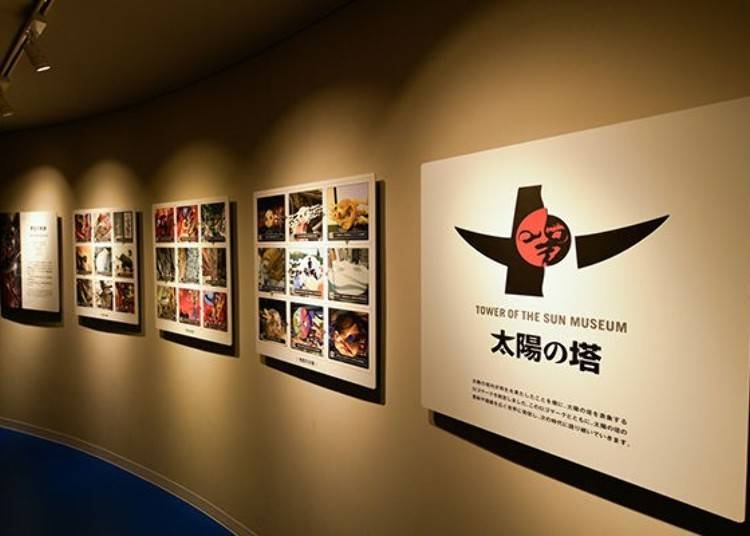
The Tower of the Sun is very intense from the outside. From the inside, you can feel the explosive talent of the artist Taro Okamoto. It made me want to know why he made these types of works.
So Many Sun Towers in the Museum Shop!
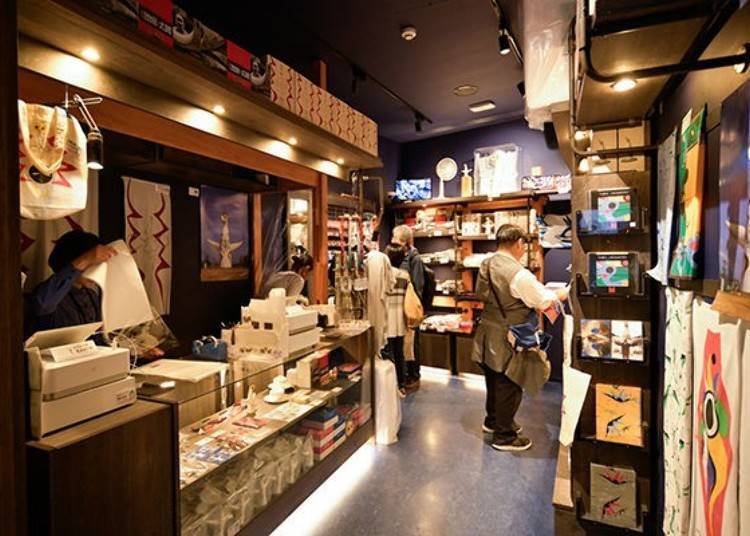
After going through the inside, let’s take a look at the museum shop with many goods motif after Taro Okamoto’s works. The museum shop is located next to the entrance underground.
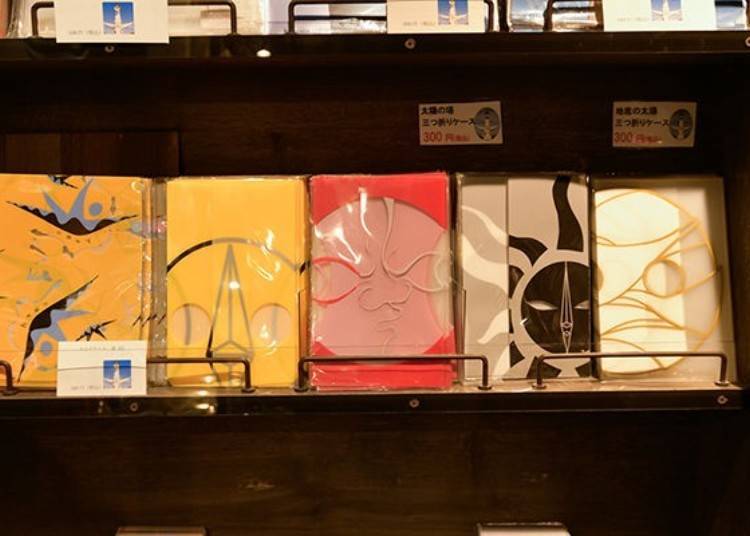
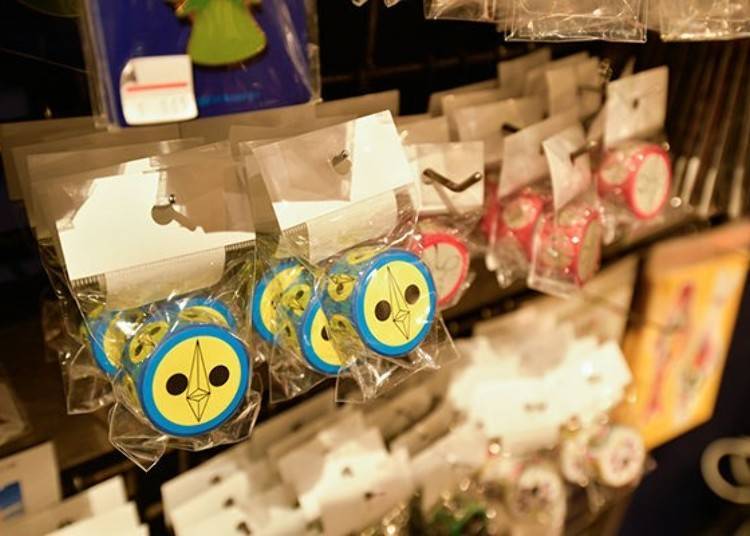
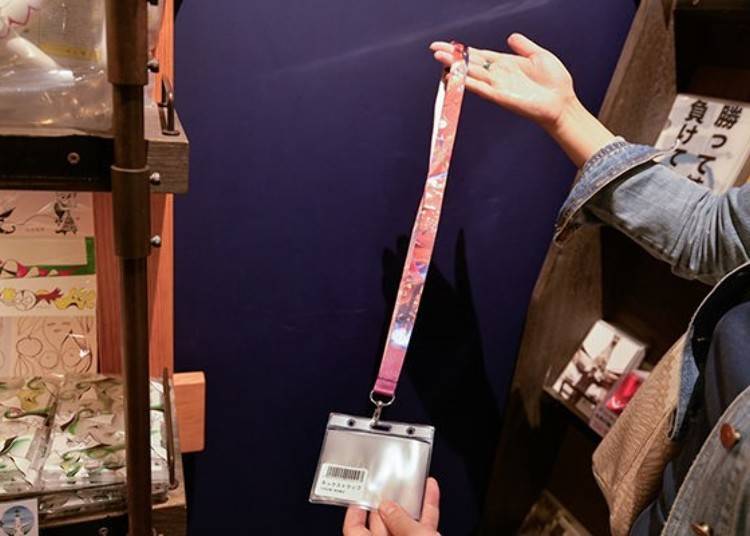

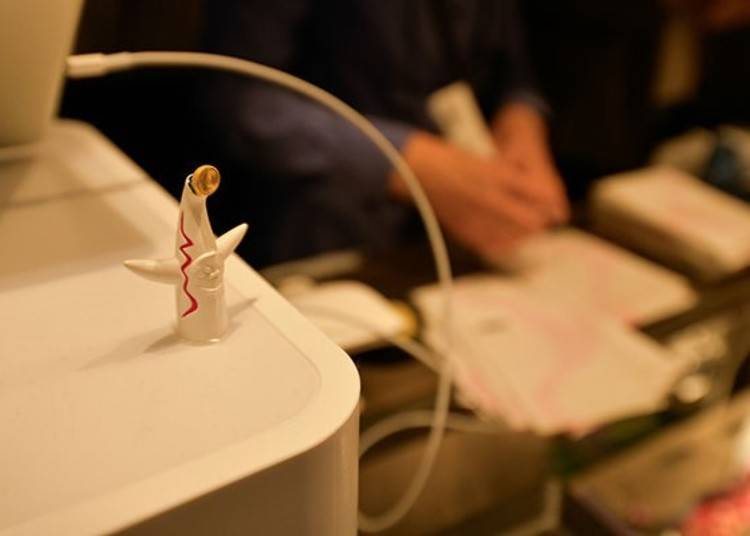
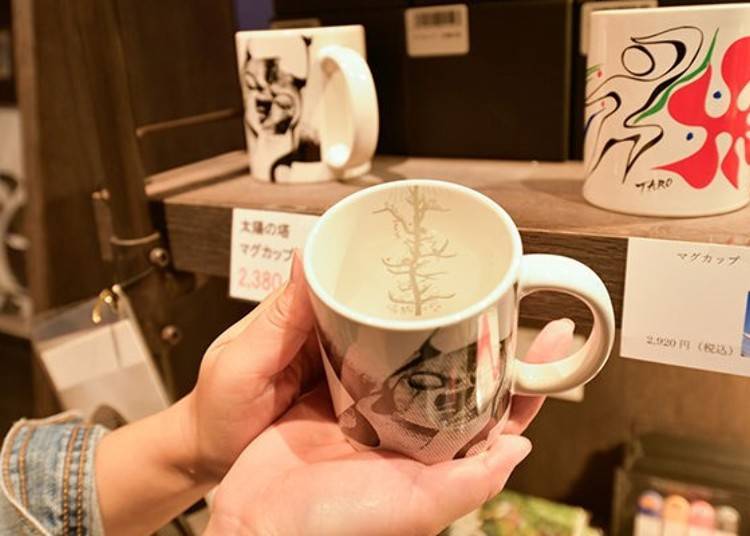
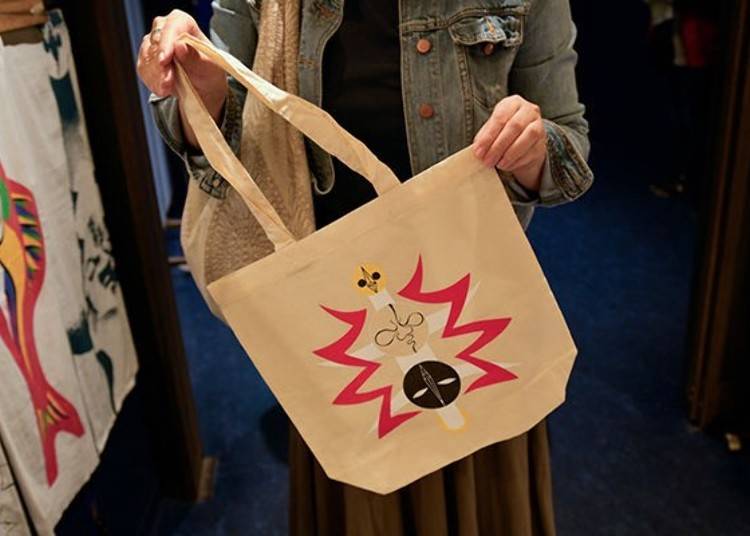
-
Tower of the Sun太陽の塔
- Address Senri Banpaku Koen, Suita-shi, Osaka
- Phone Number 0120-1970-89
Hours: 10:00 a.m. - 5:00 p.m. (Time may extend. Please check with the website)
Closed: Wednesday (open if its on a holiday, closed on the following day). New Years Holiday
*open from April 1st - Golden Week, October 1st - November 30th
Fee: Adult 700 yen, elementary and junior high school student 300 yen
*requires additional fee to enter Natural and Cultural Gardens (250 yen adults, 70 yen elementary and jr high school students
*tax included
0120-1970-89 or 06-6155-5601 (Tower of the Sun Reception)
Recommended Facilities in the Expo ’70 Commemorative Park
64.21 million visitors from Japan and around the world attended the Osaka Expo and were charmed by the various exhibits. At Expo’70 Pavilion, you can see how it was during the time.
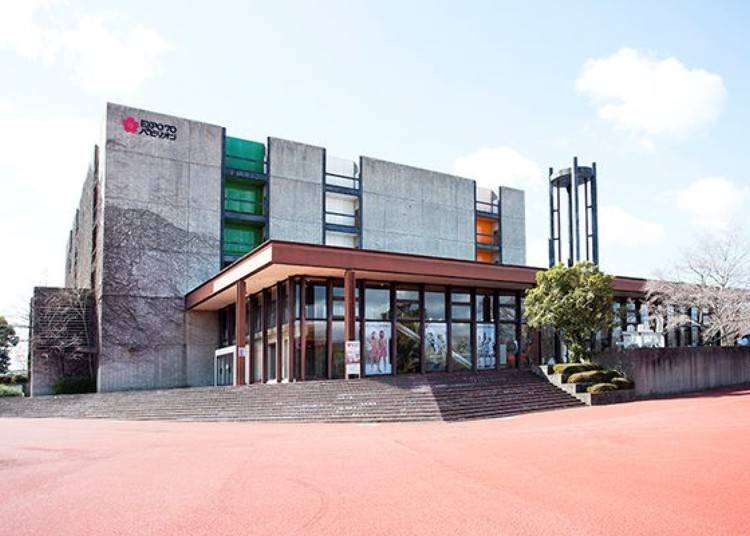
The theme of the Steel Pavilion at the time was “Song of Steel,” and they displayed artworks including instruments made with steel. At the “Space Theater” they implemented the latest audio technology. They played music from 1,008 speakers and held a show using laser beams.
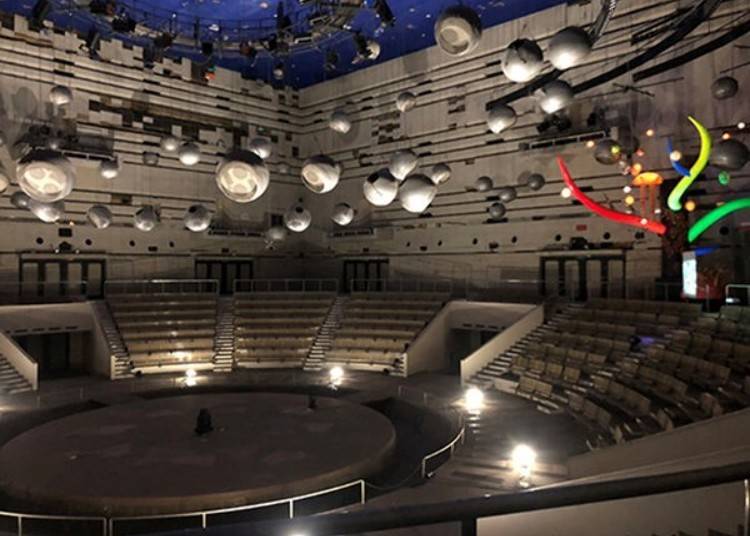
-
Expo ’70 PavilionEXPO’70パビリオン
- Address Senri Banpaku Koen, Suita-shi, Osaka
- Phone Number 06-6877-4737
Hours: 10:00 a.m. - 5:00 p.m. (last entry at 4:30 p.m.)
Closed: Wednesday (open if its on a holiday, closed on the following day). New Years Holiday
*open from April 1st - Golden Week, October 1st - November 30th
Fee: Adult 200 yen, junior high school student and below free
*requires an additional fee to enter Natural and Cultural Gardens (250 yen adults, 70 yen elementary and jr high school students
*tax included
06-6877-4737 (Expo’70 Pavilion)
The National Museum of Ethnology opened in 1977 and has been called Minpaku. It is one of the largest museums of ethnology in the world, conducting research on ethnology and cultural anthropology from around the world.

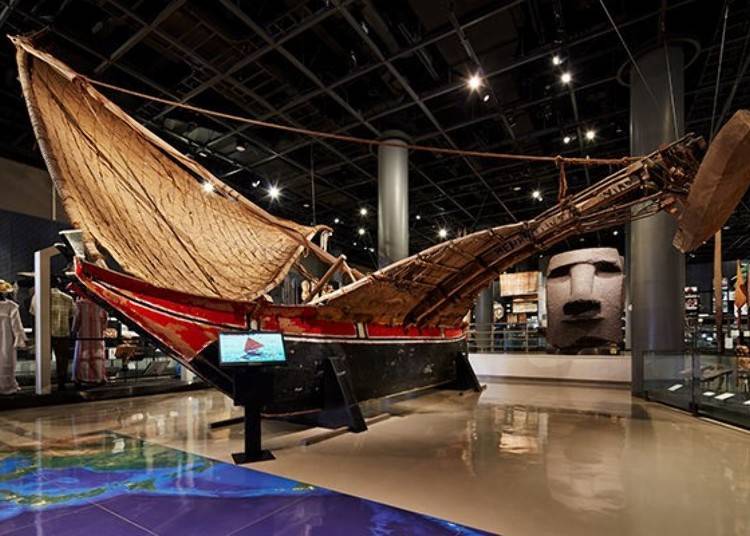
Inside there is the “Tankyu Hiroba,” where you can learn more about the research, exhibits and the videoteku, a system where you can view original footage of art, lifestyle, and culture of various people living around the world. The footage were taken by researchers of the museum. The museum shop sells crafts and books from around the world, and they also have a restaurant in the annex where you can enjoy ethnic food.
-
National Museum of Ethnology国立民族学博物館
- Address 10-1 Senri Expo Park, Suita, Osaka
- Phone Number 06-6876-2151
Hours: 10:00 a.m. – 5:00 p.m. (last entry at 4:30 p.m.)
Closed: Closed: Wednesday (open if it’s on a holiday, closed on the following day). New Year’s Holiday (December 28th – January 4th)
Fee: Adult 420 yen, University and high school students 250 yen (tax included for both price), junior high school student and below free
06-6876-2151 (National Museum of Ethnology)
The Japanese Garden is located in the northern side of the park. It was created by the Japanese government during the Osaka expo incorporating the best of Japanese landscaping technology. The 26ha garden has a stream and a pond, and it is a beautiful relaxing space where the water and greenery is in harmony.
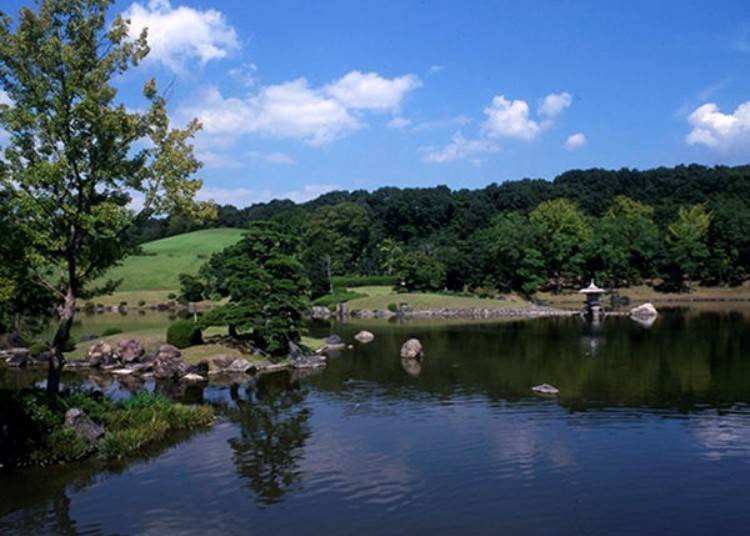
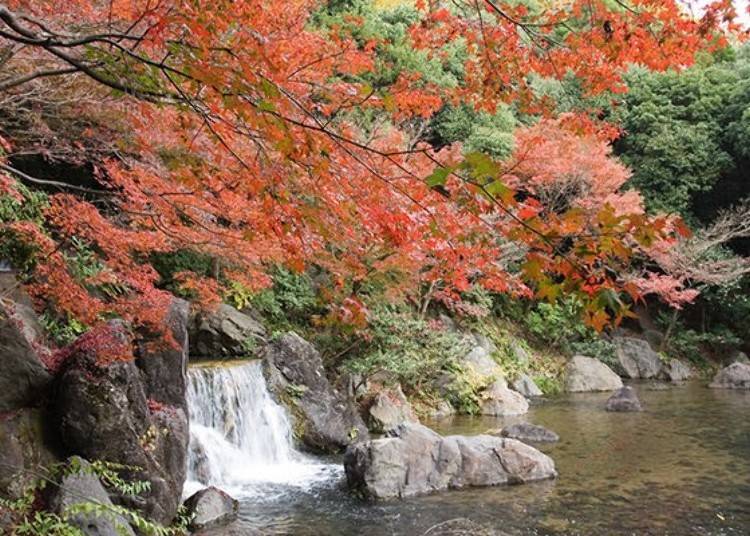
The Tower of the Sun was planned to be demolished after the Osaka Expo. While other pavilions were demolished according to schedule, it has remained in place close to 50 years. Being able to see the Tower of the Sun is close to a miracle!
-

-
Address
Senri Expo Park, Suita City, Osaka Prefecture, 565-0826
View Map -
Nearest Station
Bampakukinenkoen Station (Osaka-monorail Saito Line / Osaka-monorail Line)
8 minutes on foot
- Phone Number 06-6877-7387
-
Address
Senri Expo Park, Suita City, Osaka Prefecture, 565-0826
- Area
- Category
*Prices and options mentioned are subject to change.
*Unless stated otherwise, all prices include tax.
Popular Tours & Activitiess
Recommended places for you
-
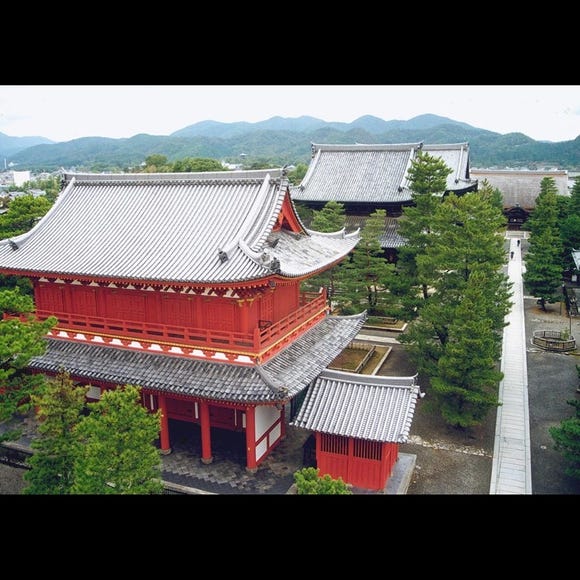
Myoshin-ji Temple
Temples
Arashiyama, Uzumasa
-

Kanzenkoshitsuyakinikutabehodai Gyugyu Paradise Sannomiya
Yakiniku
Kobe, Sannomiya, Kitano
-

ISHIDAYA Hanare
Yakiniku
Kobe, Sannomiya, Kitano
-
Goods

Yoshida Gennojo-Roho Kyoto Buddhist Altars
Gift Shops
Nijo Castle, Kyoto Imperial Palace
-

Kambei Sannomiyahonten
Yakiniku
Kobe, Sannomiya, Kitano
-

Jukuseiniku-to Namamottsuarera Nikubaru Italian Nikutaria Sannomiya
Izakaya
Kobe, Sannomiya, Kitano
-
Ad

Experiencing Manga as Culture, Not Just Reading It: Expo 2025 with Rumiko Takahashi
-

Everything You Need to Know About teamLab Biovortex Kyoto (2025 Insider Guide)
by: Wemmy Chau
-

Kyoto's Hidden Treasures Open This Winter! Enjoy Exclusive Access to 15 Rare Cultural Sites (Jan-Mar 2026)
by: Guest Contributor
-
Ad

Discover Timeless Beauty: Kimono-en, a Web Magazine Exploring the Spirit of Kimono
-
Ad

Recharge and Relax with a Healing Getaway at Kamenoi Hotel Toba
-

New Way to Reach Koyasan! Ride Nankai's 'GRAN Tenku' for a Heavenly Journey
by: Guest Contributor
Inspiration for Accommodations
-

Spacious Family Hotel in Namba: 20 Comfortable Stays for Family Fun
-

Charming Hotels to Enjoy the Spectacular Views of Arashiyama's Autumn Leaves from Your Room
-

Experience Stunning Views of Osaka Castle from Private Spaces: Top Hotels Near Osaka Castle
-

Recommended by Visitors! Arashiyama's Best-Rated Hotels
-

Family-Friendly Universal Studios Japan Hotel with Excellent Access
-

Enjoy a Comfortable Stay in Osaka! 10 Hotels with Convenient Airport Shuttle Services
-

Top 10 Recommended Hotels Near Namba Station with Great Access
-

Enjoy Night Views from Your Room! Recommended Hotels in Namba Area
-

Autumn in Japan 2025: Fall Foliage Forecast & Where to Enjoy the Colorful Leaves (+Tour Info)
-

Hoshinoya Kyoto: This Incredible Japanese Hotel Welcomes You By Boat on a Sakura-Filled River
-

5 Amazing Kyoto Festivals You’ll Want to Experience During Your Next Trip
-

(Video) Walking Tour along Narita Omotesando - Quaint Historical Village near Narita Airport!
by: Victor Gonzalez
-

Complete Guide to Buying Japanese Medicine in Japan: Phrases and Vocabulary You Need to Know
-

38 Best Things to Do in Kyoto: See, Eat, and Shop Your Way Through Japan's Cultural Capital
- #best gourmet Osaka
- #things to do Osaka
- #what to do in kyoto
- #what to bring to japan
- #best gourmet Kyoto
- #new years in Osaka
- #what to buy in nanba
- #Visiting Osaka
- #onsen tattoo friendly arima
- #daiso
- #Visiting Kyoto
- #best japanese soft drinks
- #japanese fashion culture
- #japanese convenience store snacks
- #japanese nail trends













